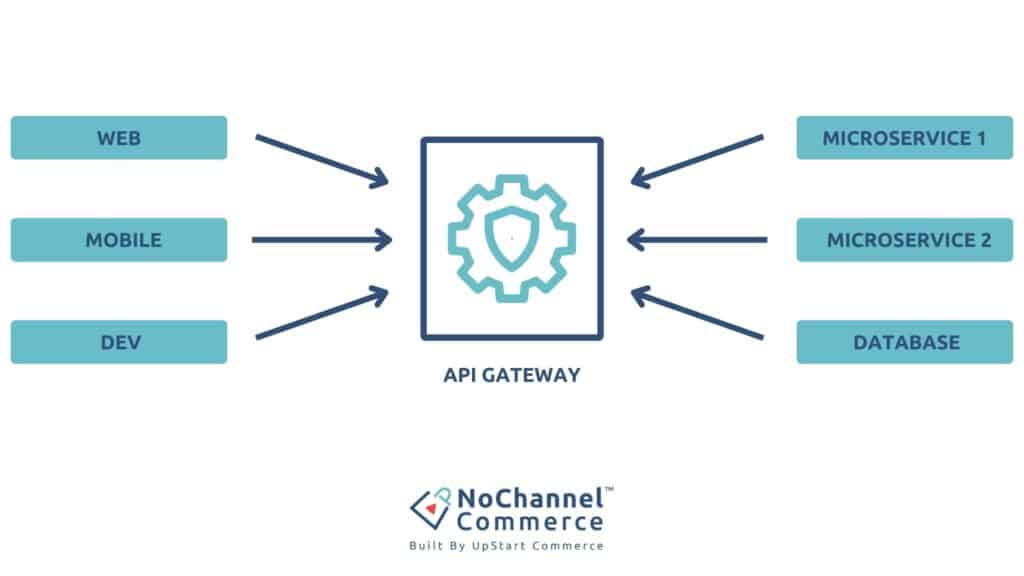Staying ahead of the ecommerce curve is paramount to a retailer’s success. Retailers need to adopt future-proof technologies that not only improve performance but also increase security. Microservices architecture has quickly gained traction in recent years for its scalability and agility. This blog post explores the ways API gateway and service mesh enhance microservices security.
Exploring Microservices Architecture
Microservices architecture breaks applications down into smaller, independent services that communicate with each other through APIs (Application Programming Interfaces). They are designed to be loosely coupled so that developers have the ability to work on them independently. This architecture leads to faster development cycles and easier maintenance.
Importance of Microservices Security in Ecommerce
While microservices offer many benefits, security remains a top concern in ecommerce. Ensuring the confidentiality, integrity, and availability of data is key while services interact with each other. This is where API gateway and service mesh come into play. API gateway and service mesh are two essential components of a microservices architecture that help address security concerns.
Understanding API Gateway
What is an API Gateway
An API gateway is a server that acts as an API front-end, receiving API requests, enforcing throttling and security policies, passing requests to the back-end service, and then passing the response back to the requester. It acts as a reverse proxy to accept all application programming interface (API) calls, aggregates the various services required to fulfill them, and returns the appropriate result.

How API Gateway Enhances Microservices Security
API gateways benefit microservices security in the following ways:
- Authentication and authorization: It provides a centralized point for managing user authentication and authorization, allowing only authorized users to access microservices.
- Rate limiting and throttling: API gateway prevents DDoS attacks and ensures fair usage of resources by imposing rate limits on incoming requests.
- Logging and monitoring: It logs API calls and monitors service health, making it easier to detect and respond to security incidents.
- Payload validation and transformation: It can validate and transform incoming and outgoing data, protecting against malicious input and ensuring data consistency.
Key Features of an API Gateway
API gateway solutions offer a range of features, including routing, load balancing, caching, and more, making them a powerful tool for managing and securing Microservices.
Exploring Service Mesh Solutions
What is a Service Mesh
A service mesh is a dedicated infrastructure layer for handling service-to-service communication throughout the microservice architecture. It provides features like service discovery, load balancing, encryption, authentication, and authorization, to increase security and reliability.
How Service Mesh Improves Microservices Security
Service mesh improves microservices security by:
- Encrypting traffic between services to prevent eavesdropping.
- Implementing fine-grained access control and authorization policies.
- Providing observability and troubleshooting capabilities for identifying security issues quickly.
Key Components of a Service Mesh
Service Mesh typically comprises two key components: the data plane and the control plane. The data plane is responsible for handling the actual network traffic between services. Meanwhile, the control plane manages the configuration and policies.
Benefits of Using a Service Mesh
Service mesh offers benefits such as improved security, resilience, and observability. It simplifies the implementation of security measures, allowing developers to focus on building microservices rather than handling network-related security concerns.
Comparing API Gateway and Service Mesh
Similarities and Differences
While both API gateways and service mesh improve microservice security, they serve different purposes. API Gateway is primarily responsible for managing incoming and outgoing API requests, while the service mesh focuses on service-to-service communication within the microservice architecture.
When to Use API Gateway vs. Service Mesh
Choosing between API gateway and service mesh depends on your specific requirements. API gateway is ideal for managing external API traffic, while service mesh is more suitable for securing internal service-to-service communication.
Combining API Gateway and Service Mesh for Maximum Security
In some cases, combining both API gateway and service mesh can provide comprehensive security coverage. API gateway can handle external traffic, while service mesh ensures secure communication between internal microservices.
Implementing API Gateway and Service Mesh Solutions
When implementing API gateway, consider best practices such as defining clear security policies, implementing proper rate limiting, and regularly monitoring and updating your gateway.
Deploying a service mesh involves careful planning and configuration. Ensure that you thoroughly understand your microservices architecture and security requirements before implementing a service mesh solution.
Both API gateway and service mesh come with their own set of challenges, such as configuration complexity and performance overhead. It’s important to be aware of these challenges and explore solutions to effectively handle them.
The Future of Microservices Security
The future of microservices security lies in the continued advancement of API gateway and service mesh technologies to meet the evolving security challenges of modern ecommerce platforms.
In a world where data security is paramount, embracing microservices architecture with API gateway and service mesh solutions is a strategic move for retailers. These technologies not only enhance security but also enable scalability, agility, and adaptability—key factors for staying competitive in the ever-changing ecommerce industry. Discover how UpStart Commerce helps retailers embrace the future of ecommerce today!
